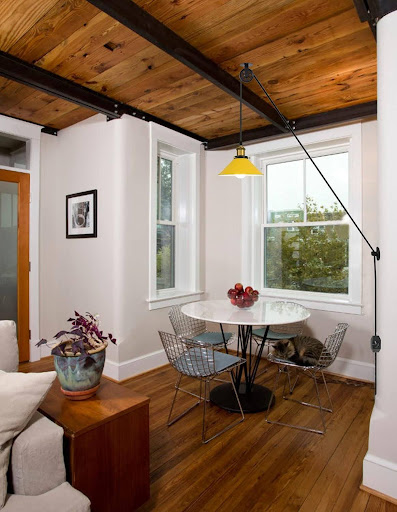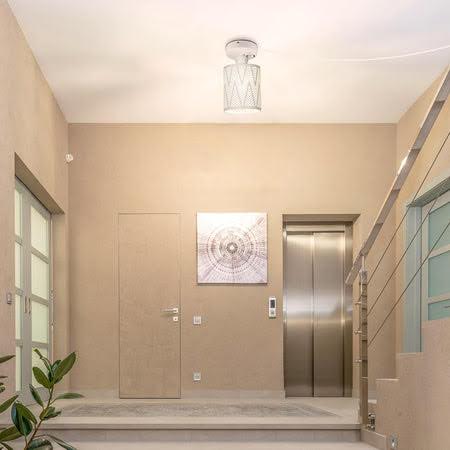Table of Contents
Kitchen lighting has evolved dramatically in recent years, and wireless pendant lights represent one of the most exciting innovations for modern homeowners. These sleek, battery-powered fixtures eliminate the need for hardwiring and electrical work, offering unprecedented flexibility in how you illuminate your cooking and dining spaces. Whether you’re looking to brighten a kitchen island, create ambient lighting over a breakfast nook, or add focused task lighting without the hassle of installation, wireless pendant lights provide an elegant solution. They combine the aesthetic appeal of traditional pendant lighting with the convenience of portable, rechargeable technology. This guide will walk you through everything you need to know about selecting, installing, and maintaining wireless pendant lights to transform your kitchen into a beautifully lit, functional space that reflects your personal style while simplifying your home improvement process.
Introduction to Wireless Pendant Lights
Wireless pendant lights are battery-operated or rechargeable lighting fixtures that hang from the ceiling without requiring electrical wiring or professional installation. Unlike traditional pendant lights that need to be hardwired into your home’s electrical system, these innovative fixtures use LED technology powered by rechargeable lithium-ion batteries or replaceable batteries. They typically feature a suspension system that can be mounted using adhesive hooks, magnetic attachments, or simple ceiling brackets that don’t require cutting into walls or ceilings. The lights themselves come in various styles, from minimalist modern designs to rustic farmhouse aesthetics, making them suitable for any kitchen décor. Most wireless pendant lights offer adjustable brightness levels and can last anywhere from several hours to several days on a single charge, depending on usage and battery capacity. They’re particularly popular for renters, those living in older homes where rewiring is impractical, or anyone seeking a quick kitchen upgrade without the expense and mess of electrical work. The technology has advanced significantly, with many models now offering warm, natural light quality that rivals traditional wired fixtures while maintaining the convenience of cordless operation.
Benefits of Wireless Pendant Lights
The primary advantage of wireless pendant lights is their installation simplicity—you can have beautiful overhead lighting in minutes without calling an electrician or dealing with complex wiring. This makes them ideal for renters who want to personalize their space without making permanent modifications that could jeopardize security deposits. The portability factor means you can easily reposition lights as your needs change or take them with you when you move. From a design perspective, wireless pendants offer remarkable flexibility in placement since you’re not constrained by existing electrical junction boxes or wiring locations. You can hang them exactly where light is needed most, whether that’s centered over a kitchen island, in a dark corner, or above a temporary workspace. Modern wireless pendant lights also prove surprisingly cost-effective, eliminating installation fees that can run hundreds of dollars and avoiding the need to repair walls or ceilings afterward. Energy efficiency is another compelling benefit, as most models use LED bulbs that consume minimal power and generate little heat, extending battery life while reducing long-term operating costs. Many contemporary designs incorporate smart features like remote controls, dimming capabilities, and even color temperature adjustment, giving you sophisticated lighting control without the complexity of smart home wiring. For older homes where updating electrical systems is prohibitively expensive or architecturally challenging, wireless pendants provide a practical path to modern lighting aesthetics.

How Wireless Pendant Lights Work
Wireless pendant lights operate using rechargeable lithium-ion batteries or replaceable battery packs that power energy-efficient LED bulbs. The battery compartment is typically housed in the fixture’s canopy or base, where it connects to the LED light source through internal wiring. Most models feature a charging port—usually USB-C or micro-USB—that allows you to recharge the battery without removing it from the fixture, similar to charging a smartphone. Higher-end versions include battery management systems that prevent overcharging and optimize power distribution for extended runtime. The LED technology is crucial to their functionality, as traditional incandescent bulbs would drain batteries in minutes, while LEDs can provide hours of illumination on a single charge. Many wireless pendants incorporate motion sensors or timers to conserve battery life by automatically turning off when not needed. The suspension system varies by model but generally uses lightweight cables, decorative chains, or adjustable cords attached to adhesive-backed ceiling hooks or magnetic mounts that support the fixture’s weight without requiring screws or anchors. Some advanced models include remote controls or smartphone apps that communicate via Bluetooth or RF signals, allowing you to adjust brightness, set schedules, or switch between warm and cool light temperatures. The combination of efficient LED technology and modern battery capacity means quality wireless pendants can deliver consistent, reliable lighting comparable to hardwired fixtures while maintaining their cordless convenience.

Choosing the Right Wireless Pendant Light
Selecting the perfect wireless pendant light for your kitchen requires balancing aesthetics, functionality, and practical considerations. Start by assessing your lighting needs—task lighting over islands or countertops requires brighter, more focused illumination, while ambient lighting for dining areas benefits from softer, dimmable options. Battery life is critical; look for models offering at least 8-12 hours of runtime on a single charge if you use them daily, or consider fixtures with replaceable batteries for extended longevity. The charging method matters too—USB-C rechargeable models offer convenience, while some prefer battery-powered options that don’t require finding outlets for charging cables. Size and scale are essential for visual balance; measure your space carefully, ensuring pendants are proportionate to your island or table—a general rule is choosing fixtures one-third to two-thirds the width of the surface below. Consider the light output measured in lumens; kitchen task areas typically need 300-400 lumens per fixture, while dining spaces work well with 150-250 lumens for comfortable ambiance. Style should complement your existing décor, whether you prefer industrial metal shades, elegant glass globes, or contemporary minimalist designs. Weight capacity of adhesive mounts is crucial—verify that your chosen mounting system can safely support the fixture’s weight, especially for heavier metal or glass designs. Manufacturers like KIVENLIGHTING offer various wireless pendant options with different battery capacities and design styles to suit diverse kitchen aesthetics and functional requirements. Finally, evaluate additional features like dimming capabilities, adjustable color temperatures, and remote control options that enhance usability and adapt to different kitchen activities throughout the day.

Installation Tips for Wireless Pendant Lights
Installing wireless pendant lights is straightforward, but following proper steps ensures safety and optimal results. Begin by determining the exact placement—hold the fixture at various heights and positions to visualize how it will look and function before committing to mounting hardware. For kitchen islands, pendant light fixtures for kitchen should typically hang 30-36 inches above the countertop surface, providing adequate clearance while directing light effectively downward. Clean the ceiling surface thoroughly with rubbing alcohol before applying adhesive hooks or mounts, as dust and grease significantly reduce adhesion strength and can cause fixtures to fall. Allow adhesive mounts to cure for the recommended time, usually 24 hours, before hanging any weight on them. When using multiple pendants, measure carefully to ensure even spacing—for two lights over an island, divide the length into thirds and place fixtures at the one-third marks rather than centering them individually. Consider using a laser level or chalk line to keep fixtures aligned if installing several in a row. Test the mounting strength by gently pulling downward with force equivalent to twice the fixture’s weight before trusting it with your pendant. Adjust the cord or chain length to achieve your desired height, keeping in mind that you can always shorten cords but lengthening them is more difficult. Charge batteries fully before first use, and keep charging cables accessible for convenient maintenance. Finally, install pendants away from water sources and steam-producing appliances to protect electronic components and extend fixture lifespan.
Maintenance and Care
Proper maintenance ensures your wireless pendant lights continue performing optimally for years. Establish a regular charging routine based on your usage patterns—most fixtures benefit from recharging every few days to prevent complete battery depletion, which can reduce overall battery lifespan. Clean the fixtures monthly using a soft, dry microfiber cloth to remove dust and cooking residue that can accumulate in kitchens; avoid harsh chemicals or excessive moisture that might damage electronic components or finishes. For glass or metal shades, occasional gentle cleaning with appropriate cleaners maintains their appearance, but always disconnect or turn off the fixture first. Monitor battery performance over time—if you notice significantly reduced runtime, the battery may need replacement, which is possible with many models. Store charging cables in a convenient location and inspect them periodically for fraying or damage that could create safety hazards. Check mounting hardware every few months to ensure adhesive hooks remain secure and haven’t loosened due to temperature changes or humidity. If fixtures are used in high-steam areas, wipe away condensation promptly to prevent moisture from affecting internal electronics. Replace LED bulbs when they dim noticeably, though quality LEDs typically last several years with regular use. During extended periods of non-use, charge batteries to about 50% capacity before storage to maintain battery health and prevent degradation.
Frequently Asked Questions
Many homeowners wonder about battery lifespan for wireless pendant lights—most quality lithium-ion batteries provide 500-1000 charge cycles before capacity diminishes noticeably, translating to 2-4 years of regular use. Brightness concerns are common, but modern LED wireless pendants deliver 200-800 lumens depending on the model, sufficient for most kitchen applications when properly positioned. Safety questions arise frequently; these fixtures are generally safe for kitchen use as they operate on low-voltage DC power and generate minimal heat, though they should be kept away from direct water exposure. Regarding weight limits, adhesive mounts typically support 2-5 pounds safely when properly installed on clean, smooth surfaces, while magnetic or screw-based systems handle heavier fixtures. People often ask if wireless pendants work during power outages—yes, since they’re battery-powered, they function independently of home electrical systems, making them excellent emergency lighting. Compatibility with dimmer switches isn’t applicable since they’re not hardwired, but many models include built-in dimming via remote controls or touch sensors. Finally, concerns about replacing batteries are valid; most manufacturers design fixtures with accessible battery compartments, and replacement batteries are increasingly available through retailers and online suppliers as wireless lighting technology becomes more mainstream.
Enhance Your Kitchen with Wireless Lighting
Wireless pendant lights offer a transformative solution for modernizing your kitchen without the complexity and expense of traditional electrical installations. They deliver the aesthetic appeal and functional illumination you desire while providing unmatched flexibility in placement and design. From their simple installation process that requires no professional help to their energy-efficient LED technology and rechargeable convenience, these fixtures represent a practical choice for homeowners and renters alike. By carefully selecting lights that match your space’s dimensions and lighting needs, following proper installation techniques, and maintaining them with regular charging and cleaning, you can enjoy beautiful, reliable kitchen lighting for years to come. The technology continues advancing, with improved battery life, smarter controls, and more sophisticated designs entering the market regularly. Whether you’re illuminating a kitchen island, brightening a dim corner, or creating ambiance over your dining area, wireless pendant lights empower you to take control of your kitchen’s atmosphere and functionality. Embrace this innovative lighting solution to enhance your cooking experience, elevate your kitchen’s style, and enjoy the freedom of cordless illumination that adapts to your lifestyle and moves with you wherever life takes you.
